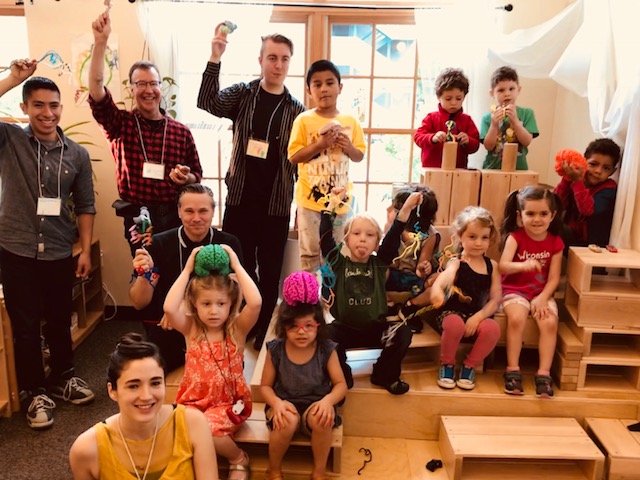Post by volunteer Ashley Keates, Portland State University
As a recent graduate in Psychology from Portland State University, I’m committed to our school’s motto, “Let Knowledge Serve the City.” As an undergraduate volunteer with NW Noggin, I’ve made pipe cleaner neurons in urban K-12 classrooms, introduced real human brains while cradling baby goats in rural Morrow County, carved a giant styrofoam cerebrum for the March for Science, and most recently talked consciousness, emotions, the power of stories and tribal memory at a Siletz powwow in southern Oregon…
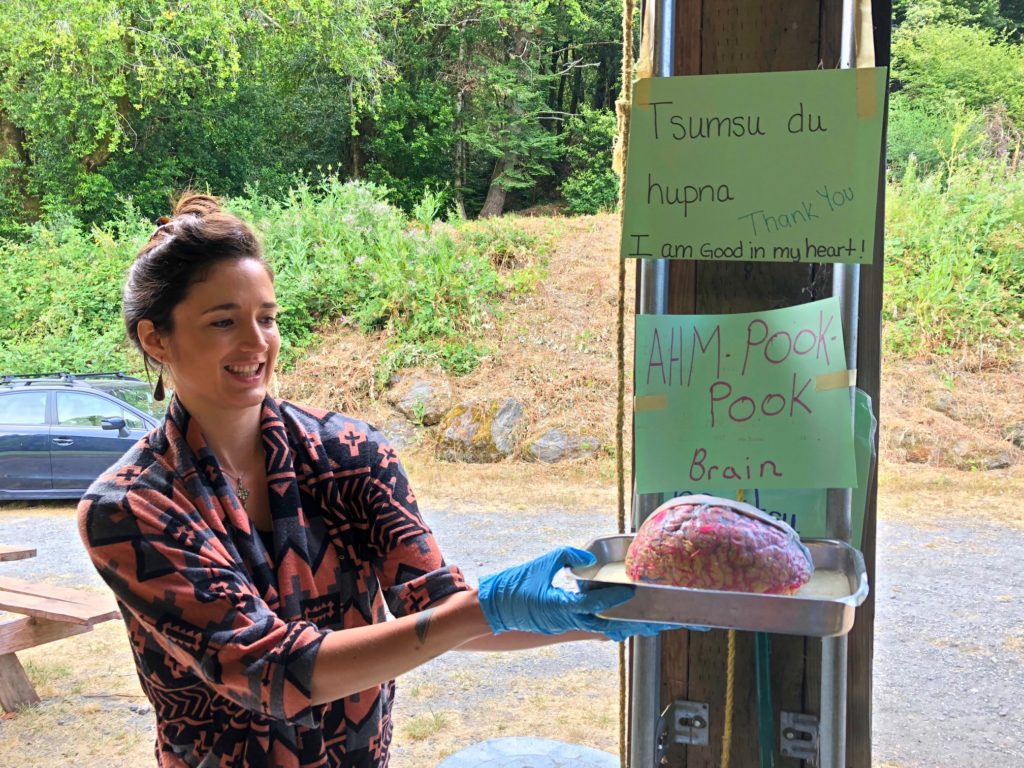
LEARN MORE: Noggin Bloggin
LEARN MORE: High Desert Noggins: Brains & baby goats!
LEARN MORE: Siletz Stories, Singing, Dancing & Brains!
This spring I also completed my senior capstone project, and along with my fellow students chose the on campus Helen Gordon Child Development Center as the site for our class project…
LEARN MORE: Spring 2018 CLASS PROJECT @ Helen Gordon and Little Vikings
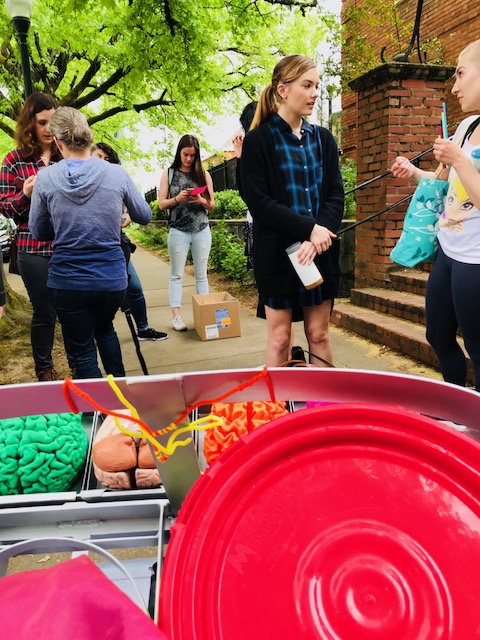
This capstone, Becoming an Effective Change Agent, was carefully and passionately designed by PSU University Studies Instructor Heather Petzold for students interested in direct involvement, learning by doing, getting out of labs and classrooms and into the community to contribute and serve the public good. These are skills I’d been developing through innovative outreach as a volunteer with NW Noggin…
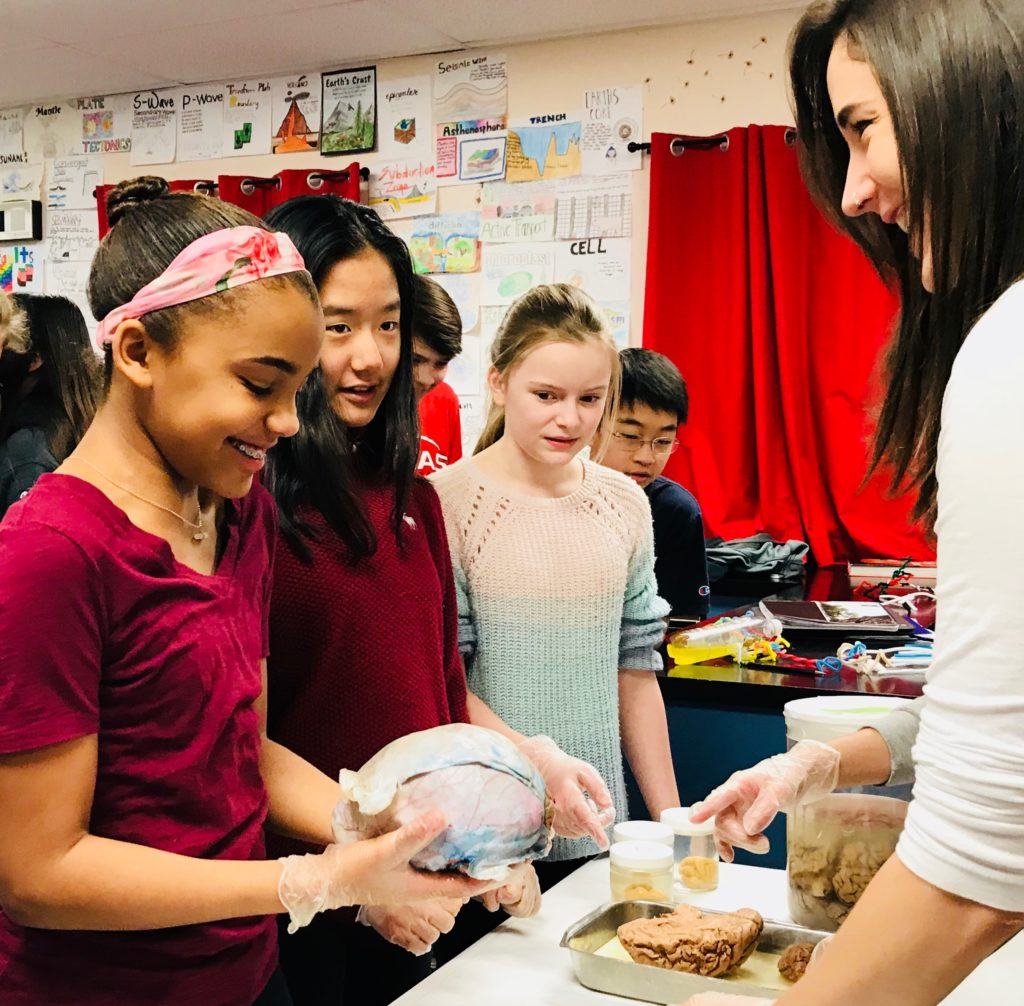
What does it mean to be an effective change agent? To me it includes understanding the concept of service learning, engaging and celebrating the remarkable diversity of our city and region, critical thinking, social responsibility, and effective communication.

Heather and her students brought these important concepts, resources, and skill sets together as they created multiple activities for children to enjoy and learn from, including card making, dancing, singing, button making, and of course more BRAINS with NW Noggin!!!
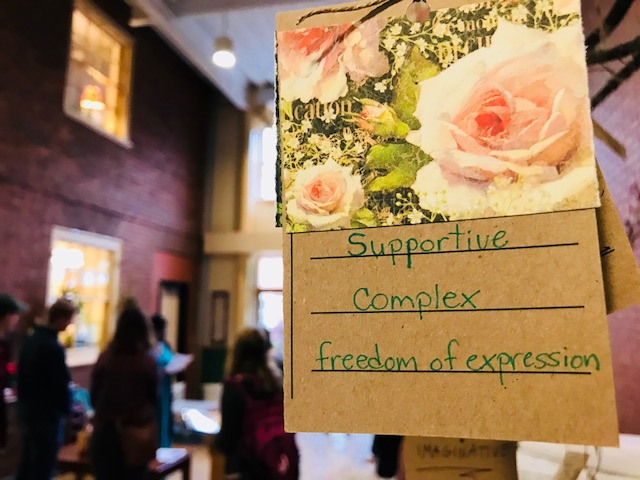
Our Noggin brain crew arrived in the Butterfly Room at Helen Gordon just in time to participate with 3-5 year olds in some meditation. Aaahhhh…. a great way to recharge the brain and body (including our own!) before diving into some fun art and neuroscience activities!

LEARN MORE: The NIH on Meditation: In Depth
LEARN MORE: Does mindfulness meditation improve attention in ADHD?
The kids were asked “What do you think your brain is made of?”
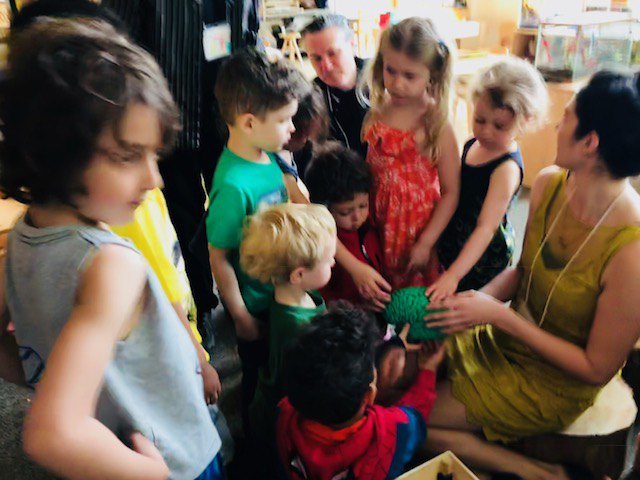
Several immediately yelled out “CANDY!!!“
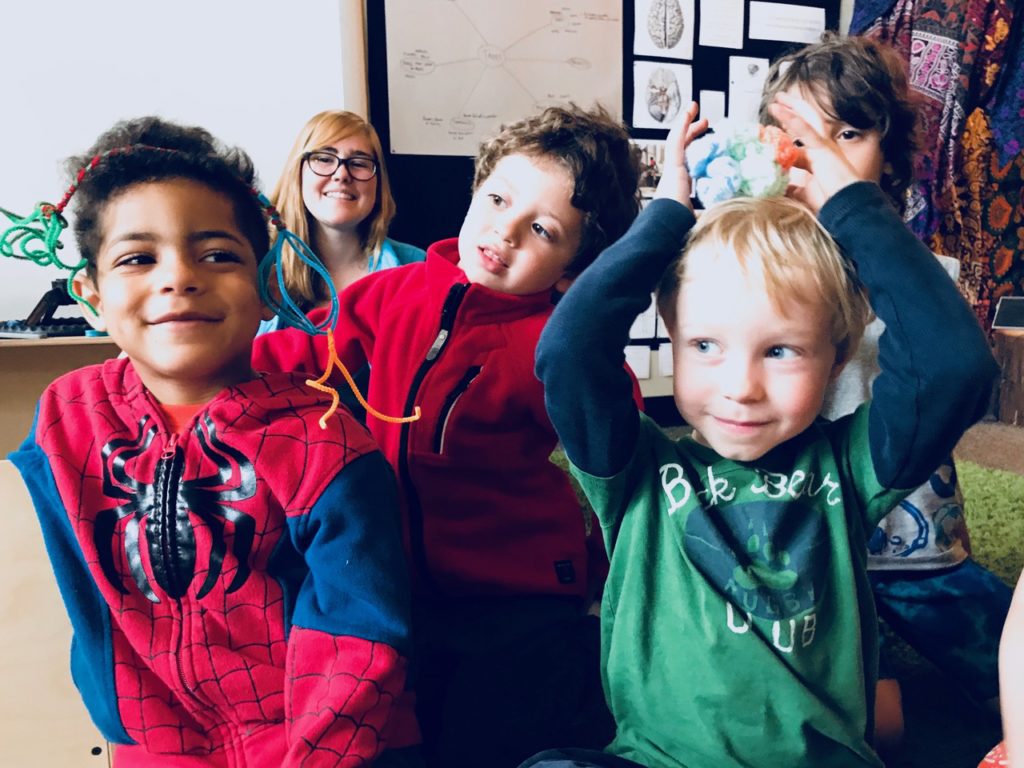
In a way they weren’t completely wrong. In fact we are made up of what we consume. The molecules from the foods we like to eat that can make it through the blood brain barrier and build up our brain cells are very important – and glucose is the brain’s #1 source of fuel!


“Meet your brain cells!” by sci-artist Immy Smith
LEARN MORE: Sugar for the brain: the role of glucose in brain function
LEARN MORE: Updated energy budgets for neural computation in neocortex & cerebellum
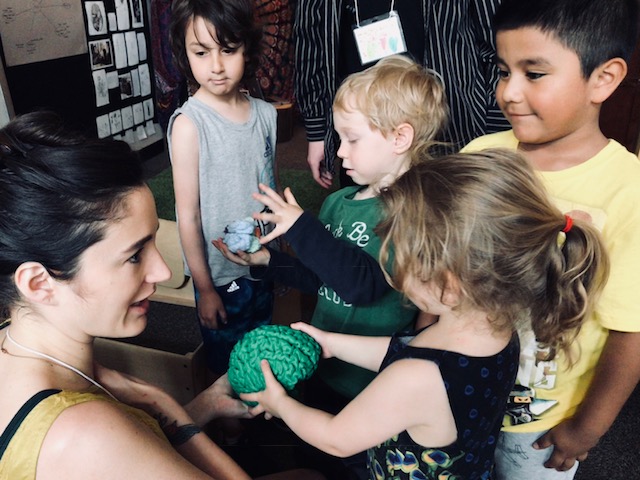
Why is our brain soft?
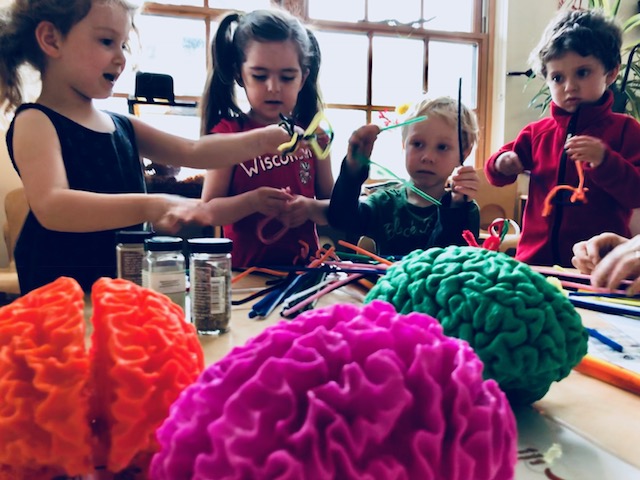
Where do smiles happen?
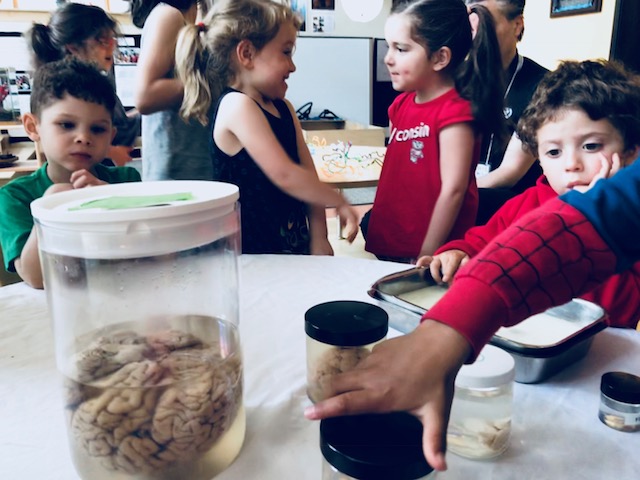
I make mistakes is that ok?

One of the children was especially interested in the brain activities, and told us pointblank that he wanted to be a neuroscientist. He dived into some creative networking, after we explained that different parts of our brains do different things – imagining that half of his brain was an airplane and the other half was a jet!

We held each hemisphere and gently took off into the “sky”…VRRROOOMMMM…. but were very careful to land with the cerebellum still intact!
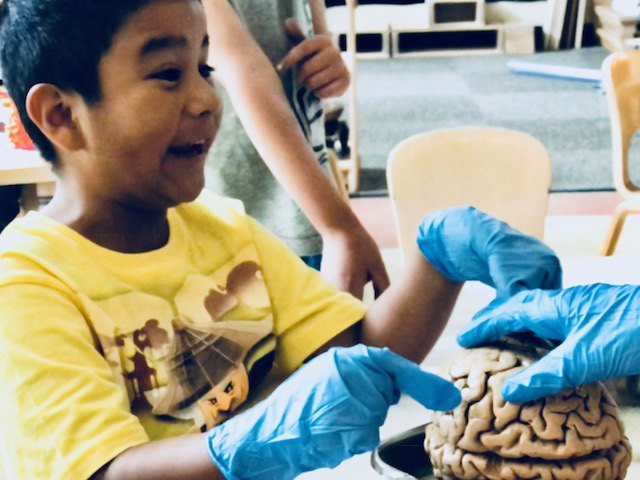
We enjoyed a great morning with these curious kids, examining colorful print outs of neurons, brain images, Golgi-stained pyramidal cells…
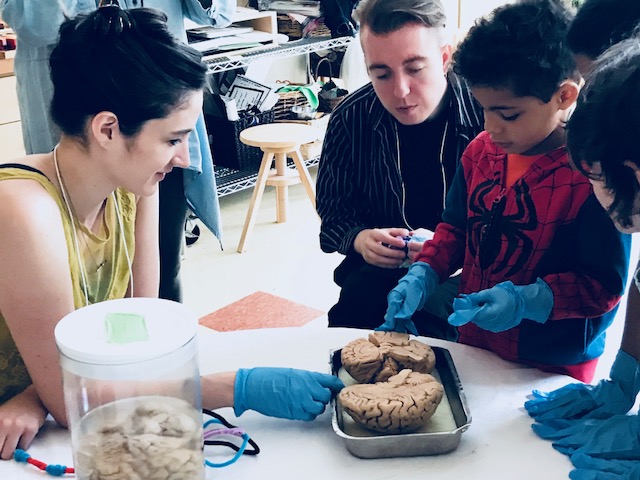

…and of course a little hands on pipe-cleaner neuron building!
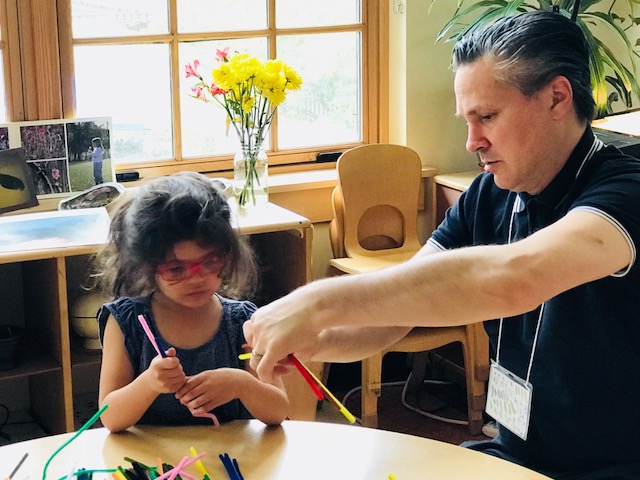
Are more dendrites smarter?

My thanks to all our dedicated Noggin volunteers, to Heather Petzold, and to the teachers and kids at Helen Gordon!
